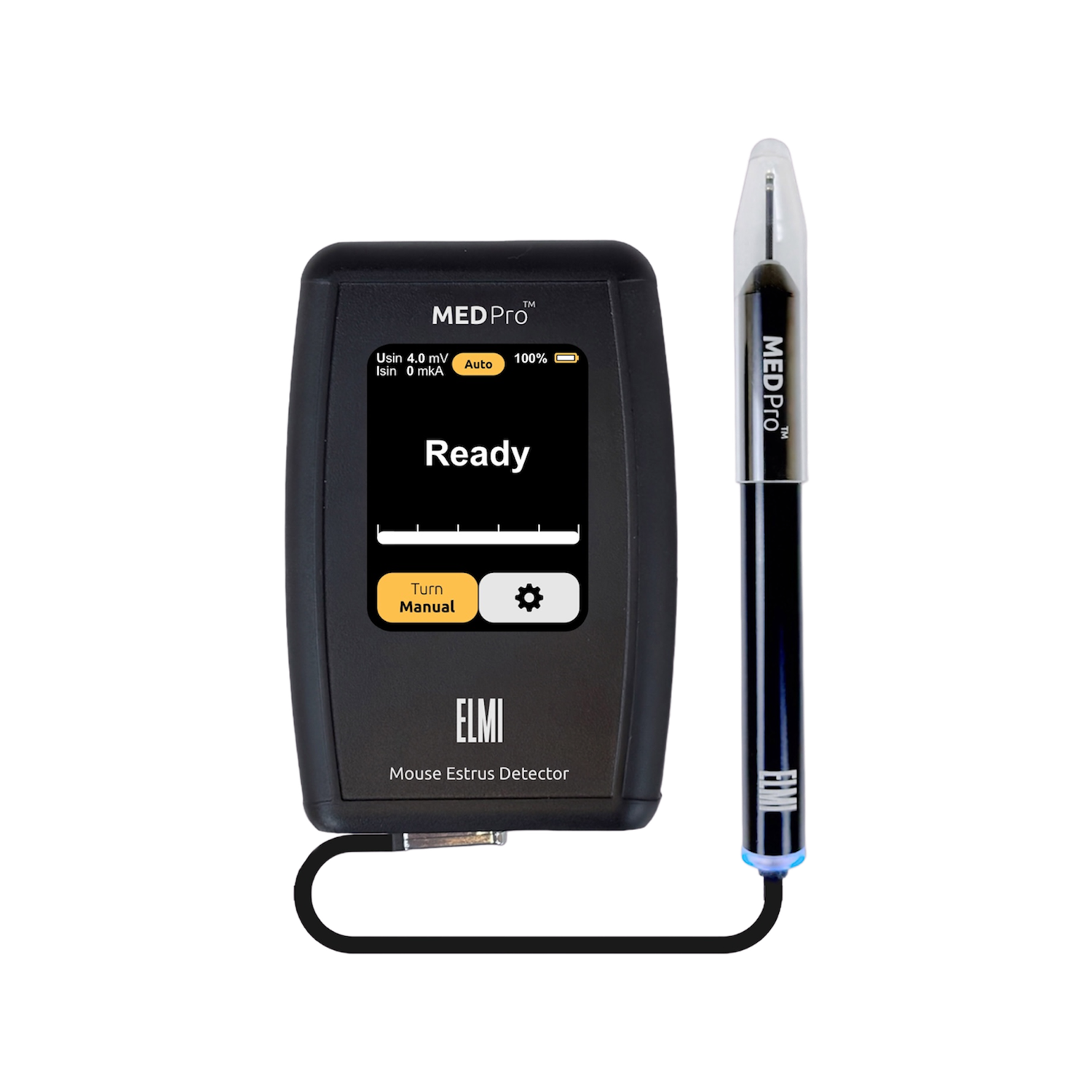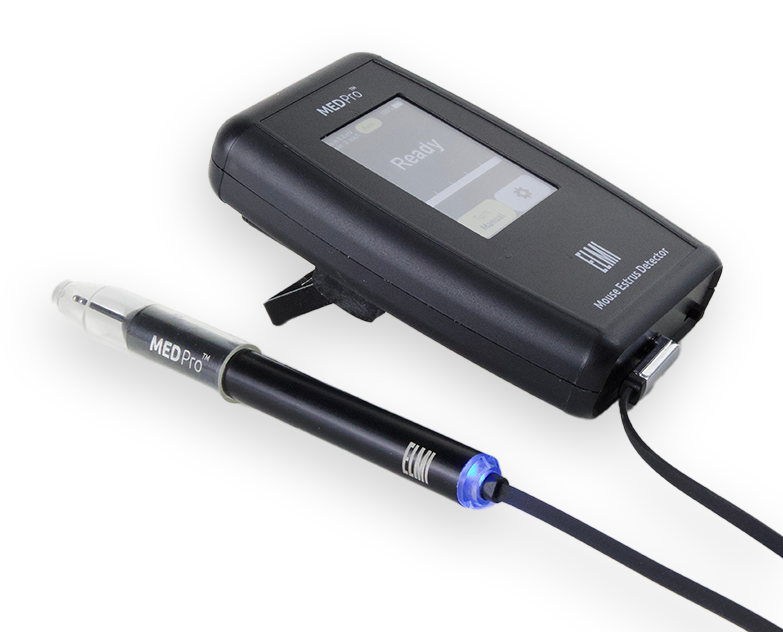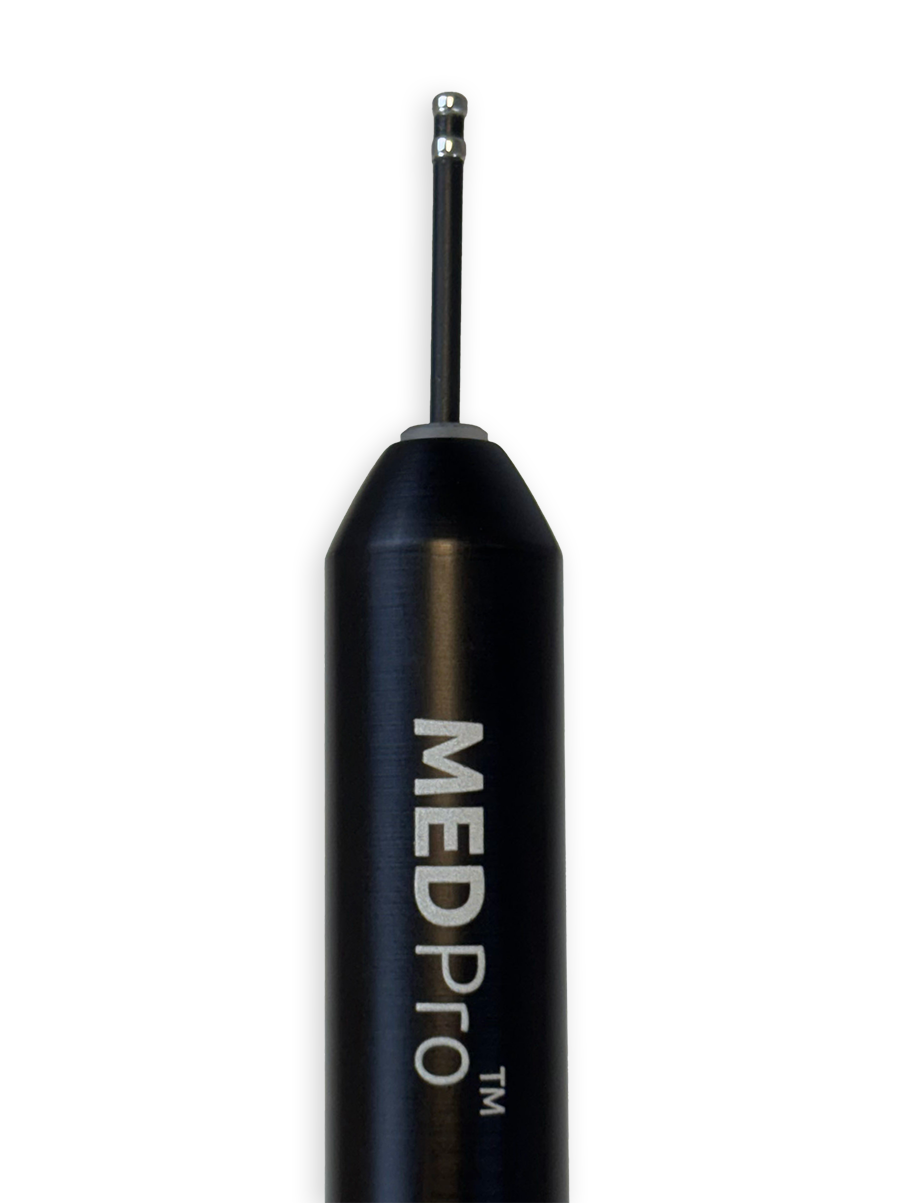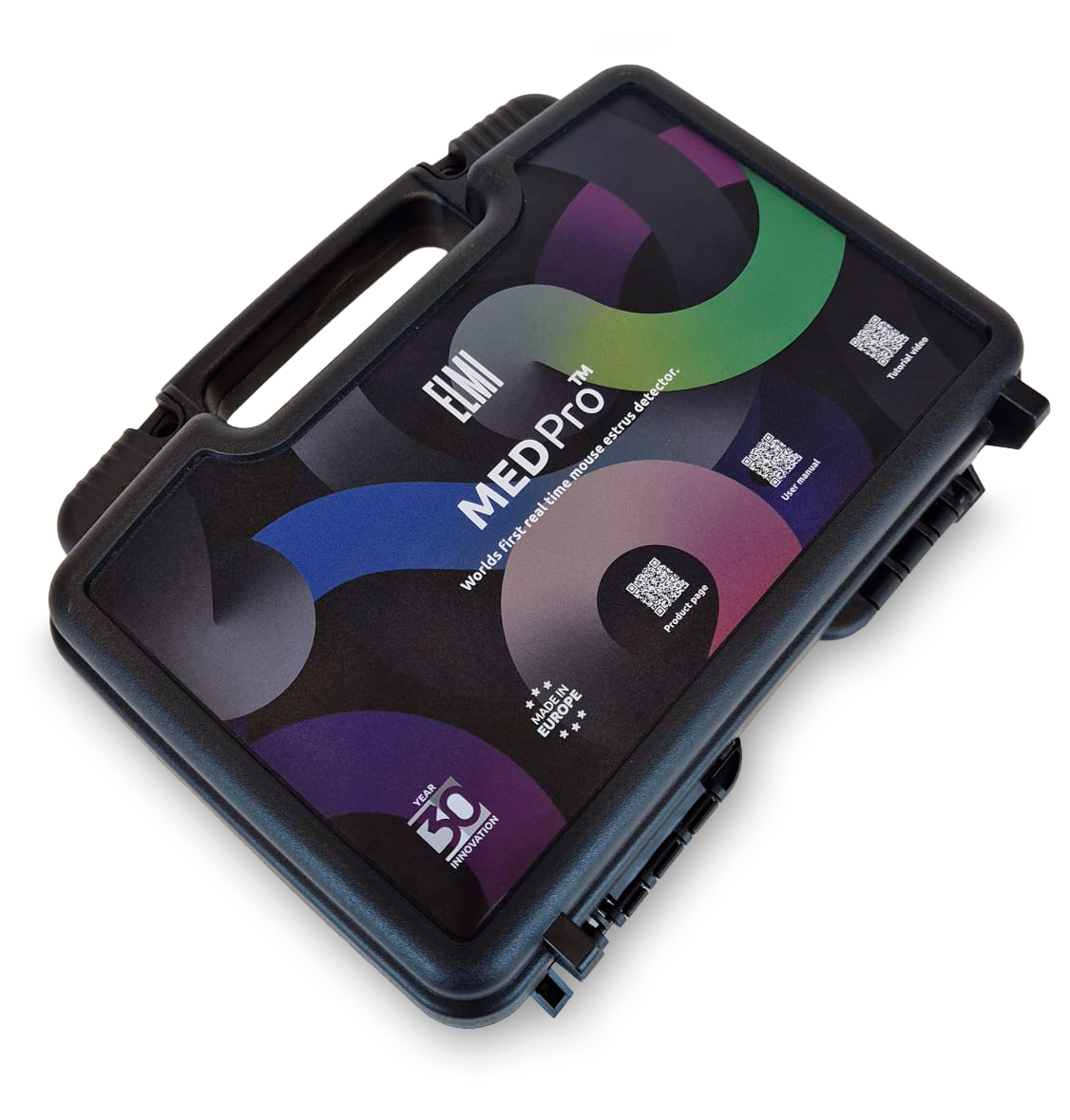Mouse Estrus Detector
MEDPro™




Mouse Estrus Detector by ELMI
Uses a simple yet clever method to tell when a female mouse is ready to reproduce (a phase called estrus).
Why the device is needed:
- Female mice go through different phases in their reproductive cycle, and knowing when they are in the estrus phase is important for breeding, experiments, and minimising the number of animals needed for research.
- Current methods, like checking vaginal cells under a microscope, are slow and stressful for the mice.
- Tiny Probe: The device has a small, smooth probe that is gently inserted into the mouse’s vagina.
- Electric Resistance Measurement: The probe sends a tiny electric signal that’s too weak to harm the mouse but strong enough to measure the resistance of the tissue inside the vagina. The resistance changes depending on what stage of the reproductive cycle the mouse is in.
- Estrus Detection: During estrus, the tissue has higher resistance compared to other phases. When the device measures resistance higher than a certain threshold (about 6 kΩ), it tells the researchers that the mouse is in estrus.
- Quick & Painless: The process takes only a second, doesn’t hurt the mouse, and doesn’t cause stress.
- Accurate: The device is more reliable and faster than older methods like visual checks or lab tests of blood and urine.
- It allows scientists to better time breeding or experiments, which helps reduce the number of animals needed. Plus, it aligns with the 3Rs principle: Replacement, Reduction, and Refinement of animal use in research.




